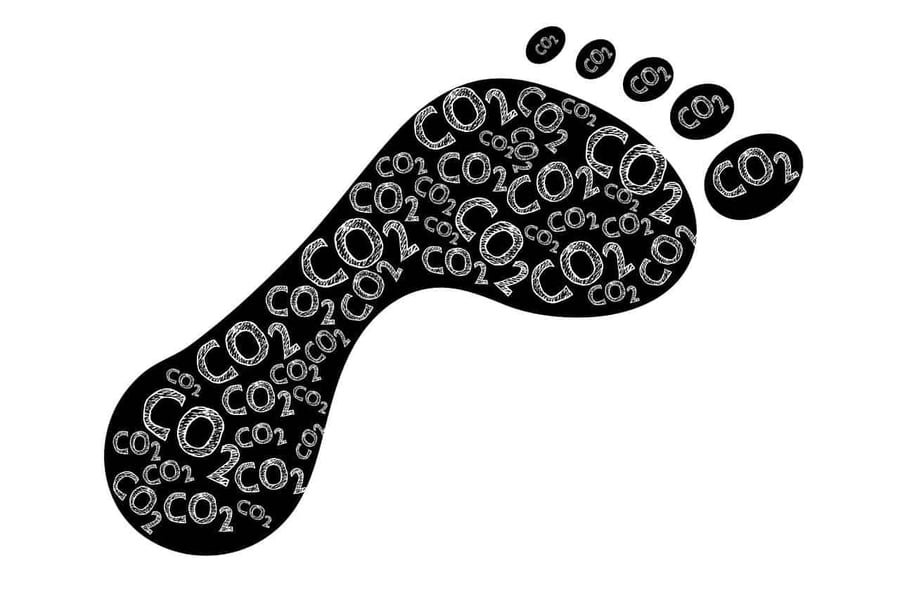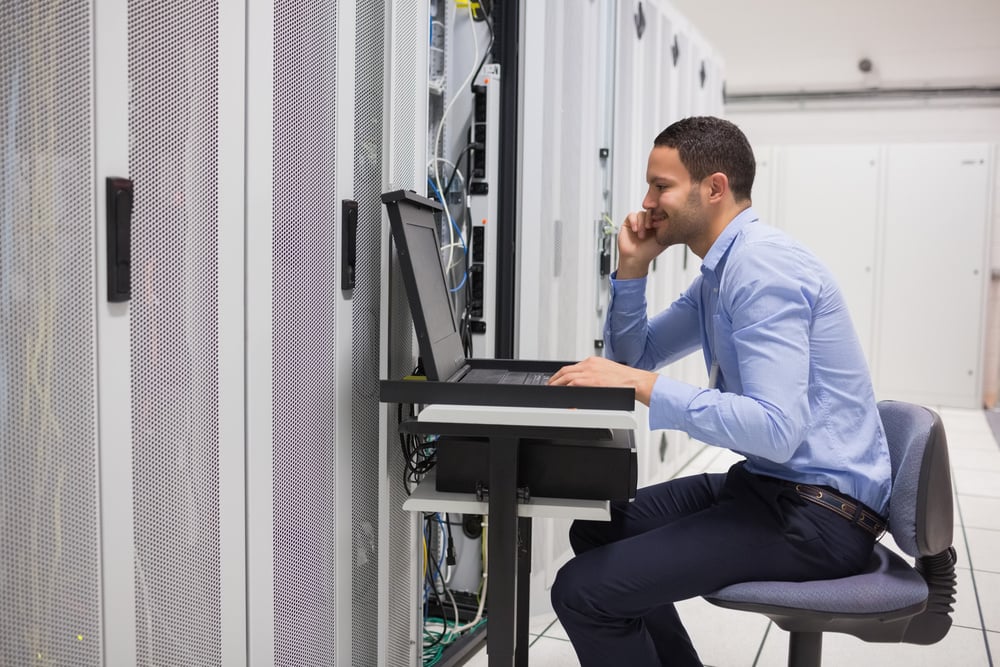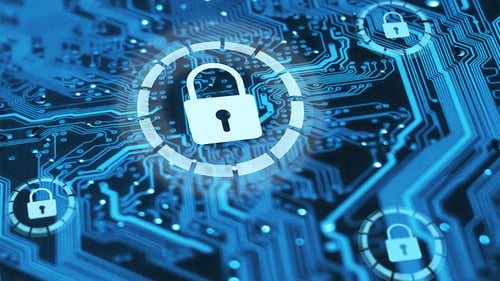Sustainable Data Center Infrastructure: Reducing the Carbon Footprint of Hardware

Sustainable data center infrastructure is an increasingly important topic as major operators such as Amazon and Google approach self-imposed carbon-lowering deadlines and data centers of all shapes and sizes face increasing governmental oversight.
“Creating energy-efficient and sustainable data centers makes a lot of sense from a business standpoint. Aside from the obvious environmental impact of lower carbon emissions, the potential business benefits include lower operating costs, reduced space requirements, and a positive brand image,” wrote Bob Violino for Network World in October. “There’s another good reason for building more sustainable and energy-efficient data centers: Regulations and standards are emerging around the world that will require or recommend such actions.”
While the data center industry has made strides in reducing greenhouse gas emissions in recent years, those efforts are offset by increasing cloud computing demands for a digital-hungry world.
“The International Energy Agency (IEA) attributes about 1.5 percent of total global electricity use to data centers and data transmission networks. This figure is much higher, however, in countries with booming data storage sectors: in Ireland, 18 percent of electricity consumption was attributable to data centers in 2022, and in Denmark, it is projected to reach 15 percent by 2030,” said the MIT Technology Review’s “Sustainability Starts with the Data Center” report released in November. “And while there have been encouraging shifts toward green-energy sources and increased deployment of energy-efficient hardware and software, organizations need to accelerate their data center sustainability efforts to meet ambitious net-zero targets.”
Understanding Data Centers and Greenhouse Emissions
Carbon footprint is a calculated value that compares the total amount of greenhouse gases (GHGs) that an activity, product, company, or country adds to the atmosphere.
This carbon footprint includes the emissions for the entire life cycle of a product. This includes emissions from production, manufacturing, use, and end-of-life.
The Center for Sustainable Systems at The University of Michigan explains it in a bit more detail: “A carbon footprint is the total greenhouse gas (GHG) emissions caused directly and indirectly by an individual, organization, event or product.” It is calculated by summing the emissions resulting from every stage of a product or service’s lifetime (material production, manufacturing, use, and end-of-life). Throughout a product’s lifetime or lifecycle, GHGs may be emitted, such as carbon dioxide (CO₂), methane (CH₄), and nitrous oxide (N₂O), each with a greater or lesser ability to trap heat in the atmosphere. These differences are accounted for by the global warming potential (GWP) of each gas, resulting in a carbon footprint in units of mass of carbon dioxide equivalents (CO₂e).”
The center estimates that a typical U.S. household has a carbon footprint of 48 metric tons of CO₂e per year. How does that compare to data centers?
Anthropologist Steven Gonzalez Monserrate in the MIT Press Reader: “The Cloud now has a greater carbon footprint than the airline industry. A single data center can consume the equivalent electricity of 50,000 homes. At 200 terawatt hours (TWh) annually, data centers collectively devour more energy than some nation-states.”
While most of the attention in reducing the data center's carbon footprint is given to lowering energy costs via renewable sources and switching to methods such as liquid cooling, or sustainable designs utilizing lower-carbon concrete and steel, an overlooked area is the sustainability of data center hardware.
“The quantity of CO2 emissions produced during the manufacturing of data center hardware is often underestimated,” according to Nordic Computer. “The hardware refresh of a data center with two racks with 50 three-year-old hardware units could generate as much as 60 metric tons of CO2e during the manufacturing phase. Dell Technologies offered a similar scenario. The emissions generated during the mining, manufacturing, and transport of one standard tower server total roughly 1200 kg CO2e. The emissions increase to 1300 kg CO2e for the standard rack server and 1750 kg CO2e for the standard blade server.”
Data Center Sustainability: Switching to Energy-Efficient Hardware
Perhaps the most important things data centers can do to reduce the carbon footprint of their hardware is to upgrade to energy-efficient hardware including prioritizing servers, hard drives, and other components with high energy efficiency ratings, as well as investing in energy-efficient cooling systems to optimize overall data center energy consumption.
Some specific sustainability strategies include:
- Solid-State Drives (SSDs): SSDs are not only faster than traditional HDDs, but they are more durable, compact, quieter, and importantly when it comes to sustainability, consume less energy:
- Power Savings: Compared to HDDs, SSDs can consume up to 90 percent less energy.
- Performance Boost: SSDs offer unparalleled read and write speeds, improving overall server performance and application responsiveness.
- Environmental Advantage: SSDs don't contain harmful materials like lead or mercury found in HDDs, making them a more sustainable choice.
- Power Savings: Compared to HDDs, SSDs can consume up to 90 percent less energy.
- Server Optimization: Choose energy-efficient server models with features like power-saving modes and dynamic clock scaling. This upgrade will improve performance while lowering energy consumption:
- Power-Saving Modes: Many servers allow configuring low-power states when idle or experiencing reduced workloads. This automatically throttles down power consumption without compromising essential operations.
- Dynamic Clock Settings: Instead of a constant high-performance clock speed, modern servers can dynamically adjust their clock frequency based on real-time processing needs. This ensures optimal performance during demanding tasks while conserving energy during lighter workloads.
- Component-Level Efficiency: Choose server models with energy-efficient components like CPUs and GPUs optimized for lower power consumption. Additionally, look for features like increased server density and virtualization capabilities to reduce the overall hardware footprint and associated energy demands.
- Power-Saving Modes: Many servers allow configuring low-power states when idle or experiencing reduced workloads. This automatically throttles down power consumption without compromising essential operations.
- Virtualization: Consolidate multiple physical servers into virtual machines on fewer powerful machines. This will reduce your overall carbon footprint:
- Reduced Hardware Footprint: Multiple VMs on a single server reduce the need for multiple physical servers, minimizing hardware clutter and associated energy consumption.
- Dynamic Resource Allocation: VMs can dynamically share resources like CPU, memory, and storage based on their real-time needs. This avoids overprovisioning hardware and optimizes energy consumption by ensuring resources are used effectively.
- Improved Server Utilization: Virtualization optimizes server utilization by eliminating idle physical hardware. This leads to lower overall energy consumption and reduces the need for additional servers as workloads grow.
- Reduced Hardware Footprint: Multiple VMs on a single server reduce the need for multiple physical servers, minimizing hardware clutter and associated energy consumption.
Keeping Your Cool: Data Center Sustainability
Energy consumption is key in sustainability considerations so try these six methods to lower your carbon footprint when cooling your hardware:
- Liquid Cooling: For higher heat densities, consider liquid cooling, which circulates cool water or coolant directly through servers for more efficient heat dissipation.
- Smart Fan Control: Implement smart fan control systems that adjust fan speeds based on server workload and temperature.
- Free Air Cooling: Free is good … right! When climate permits, utilize fresh air from outside to naturally cool your data center.
- Renewable Energy: Sun, wind, and water can all help power data centers with solar panels, wind turbines, or hydroelectricity.
- Energy Efficiency Audits: Regularly conduct energy audits to identify areas of improvement and track progress towards your green goals.
- Data Center Locations: If you have a choice, opt to locate your data center in a region with cooler climates or access to renewable energy sources to lessen your energy needs.
Beyond New Hardware: Lowering Data Center Carbon Footprint
There are other strategies beyond new hardware to lower your data center's carbon footprint.
For starters, a green move is to extend the lifespan of your current equipment through maintenance and upgrades, reuse components where possible, and responsibly recycle outdated hardware. It helps to keep the three R’s in mind: Reduce, reuse, recycle.
Also, when buying new data center hardware, choose vendors with strong sustainability practices and energy-efficient products.
Finally, do not forget how the hardware is utilized in the data center can help lessen the carbon footprint:
- Software Optimization: Optimize your software applications to reduce their hardware resource demands and energy consumption.
The first step is identifying resource-intensive software. Applications with inefficient algorithms, unnecessary background processes, or poor database queries can hog precious energy. Once identified, several optimization techniques can be applied:
- Algorithm Efficiency: Review and optimize code algorithms to minimize processing complexity and redundant operations.
- Resource Monitoring and Profiling: Utilize tools to monitor resource usage at the application level. This identifies areas where applications are overconsuming resources like CPU, memory, and network bandwidth.
- Lazy Loading and Caching: Implement techniques like lazy loading, where content is only loaded when needed, and caching frequently accessed data. This reduces unnecessary processing and server load, leading to lower energy consumption.
- Database Optimization: Review and optimize database queries to eliminate redundancies and improve data retrieval efficiency.
- Cloud-Native Development: When developing new applications, leverage cloud-native principles that promote resource sharing, scalability, and dynamic provisioning. This inherently leads to more efficient utilization of resources and lower energy consumption.
“For data center operators, options for boosting sustainability include shifting energy sources, upgrading physical infrastructure and hardware, improving, and automating workflows, and updating the software that manages data center storage,” says MIT Technology Review. “Critics might counter that, though data center decarbonization is a worthy social goal, it also imposes expenses that a company focused on its bottom line can ill afford. This, however, is a shortsighted view.”
The publication argues that lowering the carbon footprint of your data center is almost imperative to meet the growing demands of AI and other future technologies.’
“Data center decarbonization initiatives can provide an impetus that enables organizations to modernize, optimize, and automate their data centers. This leads directly to improved performance of mission-critical applications, as well as a smaller, denser, more efficient data center footprint—which then creates savings via reduced energy costs. And modern data storage and management solutions, beyond supporting sustainability, also create a unified platform for innovation and new business models through advanced data analytics, machine learning, and AI,” concluded the report.
Subscribe to News
Recent posts
LATEST NEWS
Wednesday March 22, 2023







